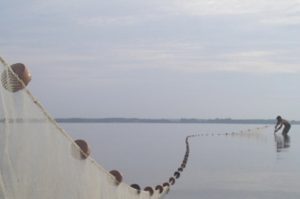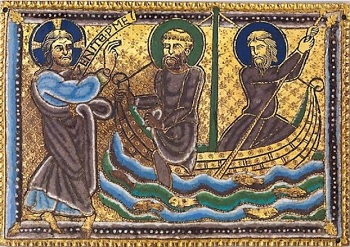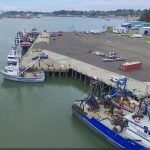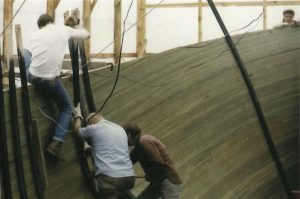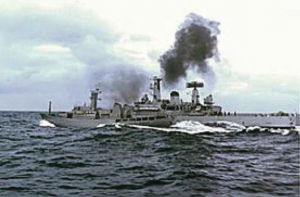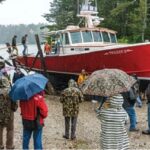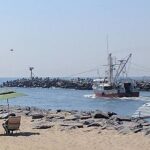Daily Archives: August 27, 2022
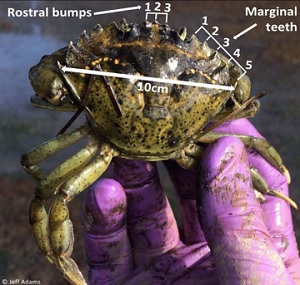
Invasive Green Crab Detected in Alaska for the First Time
The green crab is an invasive marine species spreading throughout the coastal waters of the United States. Efforts between NOAA Fisheries and Metlakatla Indian Community have been leading the way on monitoring to detect this species’ presence in Alaskan waters. The green crab has been found in U.S. waters since the 1800s, but this is the first confirmed presence in Alaska. They are a threat to native species and habitats. They are highly competitive predators that can decimate shellfish populations, outcompete native crabs, and reduce eelgrass and salt marsh habitats. They are a serious threat for Alaska’s tidal habitats. >click to read< 11:47

Louisiana Wildlife and Fisheries enforcement agents cited a Delcambre man for alleged shrimping violations
Agents cited Jimmie Dupre Jr., 48, for failing to return serviceable trap to the water, trawling inside waters with oversized nets, taking commercial fish without a commercial gear license and vessel license. Agents were on patrol in West Cote Blanche Bay when they encountered a Dupre Jr. operating a shrimping vessel. During an inspection, agents found that Dupre Jr. did not possess a commercial gear license or vessel license. He was also in possession of two trawls that were over the legal size limit of 25 foot long and two serviceable crab traps on the deck of the vessel. Agents seized two shrimp trawls, two crab traps, one shrimping vessel on seizure order and 1,943 pounds of shrimp. >click to read< 10:45

FERC Staff Recommend Removal of Lower Klamath Dams in Final Environmental Document
After nearly two decades of painstaking negotiations and political turbulence, the largest river restoration project in American history is set to begin early next year. This morning, Federal Energy Regulatory Commission (FERC) staff released the long-awaited Final Environmental Impact Statement (FEIS) for license surrender, decommissioning and removal of four dams – Copco No. 1, Copco No. 2, J.C. Boyle and Iron Gate – on the Lower Klamath River, a move that would restore over 400 miles of critical salmon spawning habitat in the Klamath Basin. The 1,242-page document contains FERC staff’s evaluation of the environmental, cultural and economic impacts associated with dam removal. In short, staff agree that dam removal is the best path forward. >click to read< 10:08

Father, Son Clinging to Cooler Rescued After Lobster Boat Sinks in Boston Harbor
A father and son held on for their lives by clinging to a cooler and lifebuoy while stranded off the coast of Boston Wednesday evening. Officers Stephen Merrick and Garret Boyle of the Boston Police Harbor Unit responded to the 911 call at 6:30 p.m. “We’re so weak, I can’t even move. Help him up, please,” the son said to the officers during the rescue, which was captured on video. “Seeing their faces, they were tired, they were scared,” Merrick noted. The stranded men stated to police that they were out catching lobsters when their engines died. Video, >click to read< 09:24
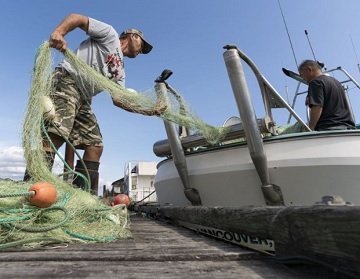
Poor Fraser River sockeye run spells end of the south coast salmon fleet
B.C. commercial fishermen are now forced to resign themselves to the reality that they will be shut out of the Fraser River sockeye fishery for the fourth year in a row, and for some that means the end of the road. “I think this is pretty much the end of the south coast salmon fleet,” said Dawn Webb, an organizer for the UFAWU-Unifor fisherman’s union. Earlier in the season, fairly strong returns of sockeye for the Skeena River, Barkley Sound and early Stuart Fraser River sockeye seemed to bode well for a healthy enough return to allow for a commercial opening this year. This is, after all, supposed to be a dominant year for Fraser River sockeye. >click to read< 07:34

































